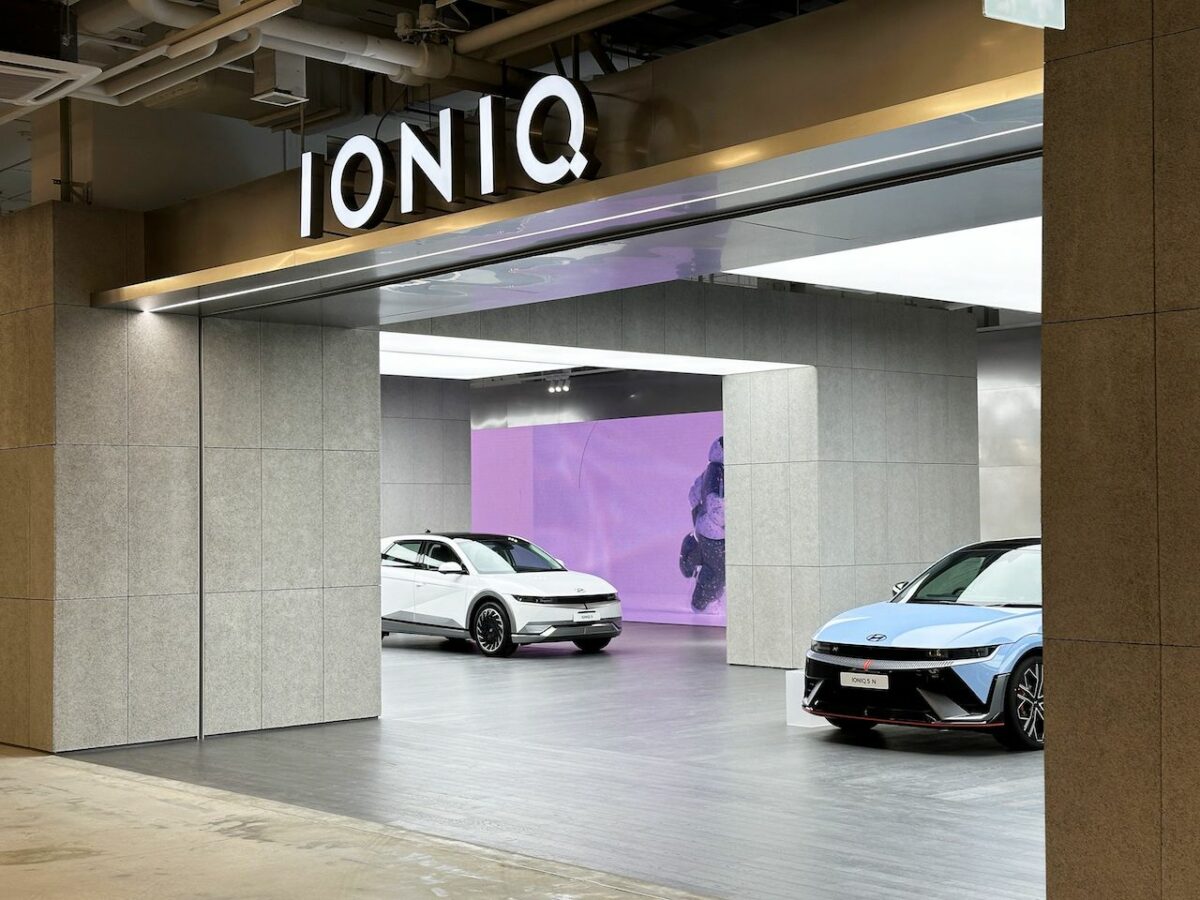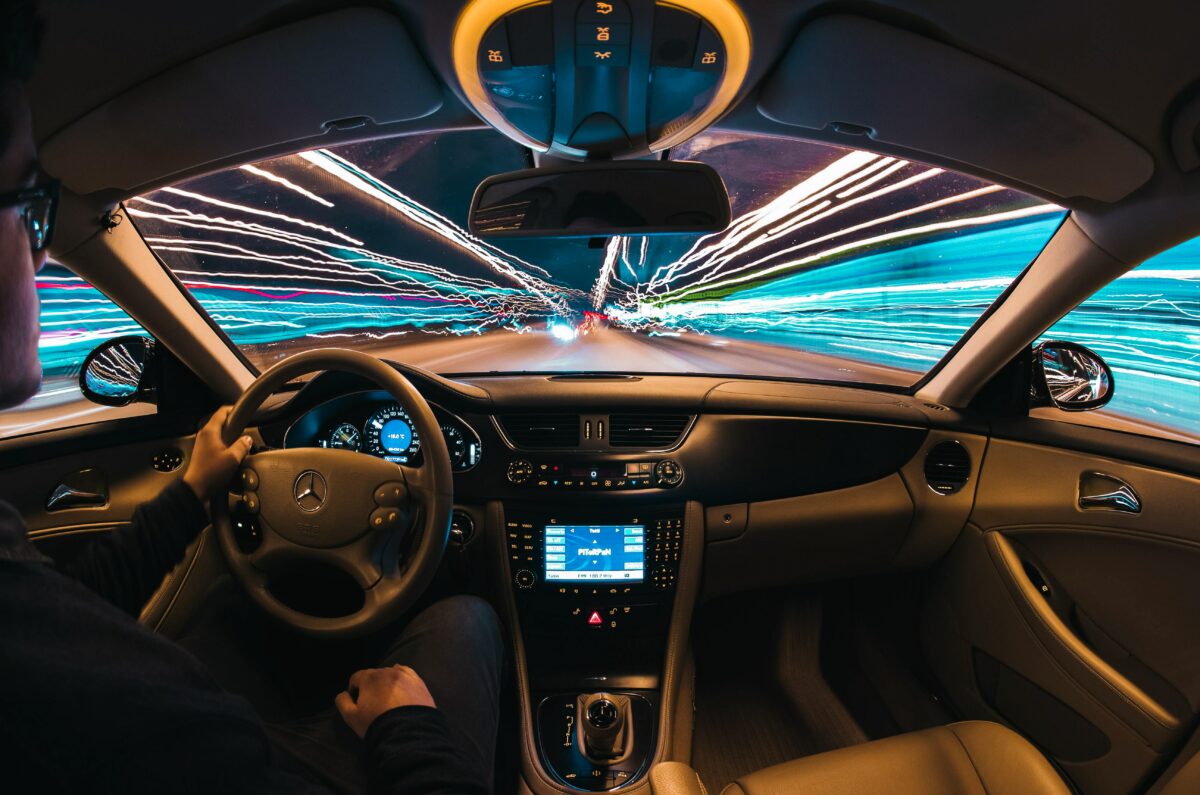In the late Iain M. Banks’ classic Culture science fiction novels, it is noteworthy that pan-galactic civilisation is effectively governed by intelligent vehicles (albeit in the form of 100km-long, all-powerful warp-speed spacecraft, rather than the odd Fiesta with a satnav). Back here on Earth, the development of driverless cars continues apace, including various countries’ announcements of pilot schemes to get cars without drivers on the road by 2015, and regular news of technology and communications trials.
It is easy to see why vehicles could indeed be the place where Artificial Intelligence really does develop, given the challenges of real-time sensing and information processing, communicating with potentially hundreds or thousands of other road users or interacting objects, and dealing with decentralised versus centralised decision-making. Ultimately, in extremis, this extends to having the ability to make ’moral’ split-second decisions; hypothetical scenarios used to illustrate such decisions include the choice between running over the neighbour’s cat or causing your child in the back seat to suffer whiplash.
While the potential for this technology to have a huge impact on road safety in the long run should perhaps be the primary reason to support it, it is interesting to consider how transformational it could be in the context of decarbonising the transport part of our energy system. In 2013, 116 million tonnes of carbon dioxide (CO2) were emitted by the transport sector in the UK, which equates to around 25% of the total CO2 emissions nationally. Road transport is the most significant contributor, and in particular passenger cars.

From a pure efficiency perspective, there should be substantial gains. For example, smoother driving speeds enabled through communication between vehicles will reduce slowing and stopping, and a reduction in congestion in general will reduce energy use. So, too, would reduced drag through concepts such as car trains (where cars are driven very close together on motorways, again enabled through direct communication and co-ordination between vehicles). But enabling cars to drive on their own could also have a profound effect on the role of electric vehicles (EVs) in a decarbonising world.
EVs are often seen as a core part of a decarbonised future energy system in the 2030s and beyond. The logic goes that first electricity generation is decarbonised by moving to low-carbon options, such as nuclear and renewables. Having done that, electrification of other parts of the energy system, such as heating and transport, becomes a route to driving carbon reductions elsewhere. Often, the narrative is extended to recognise the potential synergy between the need to manage intermittent output from renewables and the extensive battery capability that could exist within a fleet of EVs. Essentially, the variable output from wind and solar generators would be absorbed and smoothed by the smart management of the charging and discharging of a fleet of millions of EVs, reducing the need for costly (and potentially carbon-emitting) back-up generation.
Clearly, there are a number of challenges to this scenario, not least the cost of EVs compared to conventional internal combustion engine (ICE) alternatives. Perhaps even more critical are the practical limitations on the use of EVs that are implied by the battery range and charging requirements. Many would challenge the practicality of a high volume of EVs on the road for these reasons, even in the longer timeframe under discussion here.
This problem is compounded by the fact that the most obvious starting points for greater penetration of EVs are urban centres. Not only would the shorter urban journeys be more suited to limited range EVs, but there would be significant benefits in terms of improved air quality and reduced noise pollution. Arguably, one could see these urban factors ultimately being stronger drivers for EV deployment than decarbonisation, depending on the outcome of international negotiations around carbon, given the much more direct and visible impact on people’s lives today. But urban centres are also the place where charging challenges are perhaps the greatest. While a few public charging points might support small volumes of EVs, the lack of off-road parking for the great majority of residents would appear to be a huge barrier to greater adoption – you can’t just park in the street when you get home and plug in your car as you might in the driveway or garage of a suburban house.
This could change dramatically with driverless cars. Suddenly, there is no need to plug a car in at home. In fact, there’d be no need even to park near home at all. Your car could drop you off, and make its own way to the nearest garage for charging, ready to pick you up later. It might well return to somewhere closer by when it is ready to roll.
However, there is still the problem of cost. Here, the prospect of driverless cars opens up the potential for a radical change in the model of car ownership. While there are, of course, many and various reasons for wanting to own a car, arguably many of them are associated with having a vehicle ready-and-waiting outside your door when you need it, rather than the concept of ownership itself. In the seminal 1995 RAC Foundation report ‘Car Dependence’, four of the top five key reasons for ownership related to having a car when you needed it, the privacy, the feeling of control, and the enjoyment of driving – none of which per se require ownership of a vehicle. Of course, there are many other social and emotional reasons why people want to own their vehicles, but it is certainly possible that over time these might be outweighed by other benefits associated with different models.
So, if we could overcome the social barriers to different ownership models, what might the cost impact be? Let’s take London as an example. There are around 2.6 million cars owned by London residents, making around 5 million trips on an average weekday. Many of these are short – they split roughly a third each between trips of less than 2 km, trips between 2 and 5 km, and longer than 5 km. Perhaps more surprisingly, it also turns out that car trips are relatively well distributed across the day – there is very little difference in the number of car trips taken per hour between 7am and 7pm. So, the maximum number of concurrent trips is correspondingly relatively low – approximately 400,000. Allowing for some slack, this suggests that it might be possible to deliver all the trips required by London’s car drivers with, say, a third of the number of cars in total. If that could happen, the barrier associated with higher costs for EVs would clearly be very significantly reduced.

In addition, of course, there could be important social benefits in terms of accessibility – for those who are unable to drive themselves for health or disability reasons, and for those in lower income brackets for whom car ownership is not affordable. Clearly this would take more thinking and analysis to consider fully – including regional patterns and how cars would move between trips for different customers, where charging centres would be located, and, importantly, assessing how demand for journeys might change under this very different service model. But it seems like an opportunity worth assessing.
Such a change would, of course, require much more than just the driverless cars themselves. A whole new provision of service would be required, and a ‘smart’ system of communications and control would be needed to ensure that cars were in the right place at the right time to offer something sufficiently close to the ready-when-you-need-it attraction of owning your own vehicle.
While some, such as the UK’s Committee on Climate Change, see EVs as a ‘must-have’ element of a low carbon future, others, such as the Energy Technologies Institute, are less clear-cut and see multiple different pathways. But either way, most organisations that have considered, and aimed to quantify through modelling, the potential role of EVs in decarbonisation pathways have simply tested the replacement of internal combustion engines with electric motors, rather than exploring changes to the pattern of use. When we are talking about long-term (2050) scenarios, perhaps we need to start re-considering this. In terms of timeframes, that leaves plenty of time for driverless technologies to develop and for the associated cultural and legal issues to be overcome. And we know the potential rate at which IT and associated communications solutions can develop. Might driverless cars be the catalyst for which EVs have been waiting?



